

|


|
|
1/10 Scale Electric Buggy:
Schumacher Cat 2000 - U460M
|
Released in October 1993, after the flop that was the Bosscat, the 4WD Schumacher Cat 2000 was a breath of fresh air.
The design was completely new. Gone was the "crashback" feature, used on previous Schumacher models, replaced by a fixed shock mount system. Simplified wishbones and hub carriers made the Cat 2000 a much stronger construction and easier to maintain.
Success soon followed the Cat 2000 release and in the 1993 World Championships, it finished 2nd with Kevin Moore and 3rd with William Mitcham. Then, in 1994 and 1995, a modified Cat 2000, driven by Craig Drescher, came 1st in the European Championships.
Other early Cat 2000 successes include: 1995 Nordic Champion, 1995 Finnish Champion, 1995 Canadian Champion, 1995 EFRA Belgium Champion, 1994 European Champion, 1994 EFRA Belgium, Champion, 1994 Lebanese Champion, 1994 Danish Champion, 1994 Dutch National, 1994 French Championship, 1994 EFRA Finnish Championship, 1994 Scandinavian 4WD Championship, 1994 Canadian National Championship, 1994 EFRA British Grand Prix, 1994 Italian National Championship and 1994 Arbon Grand Prix Austria.
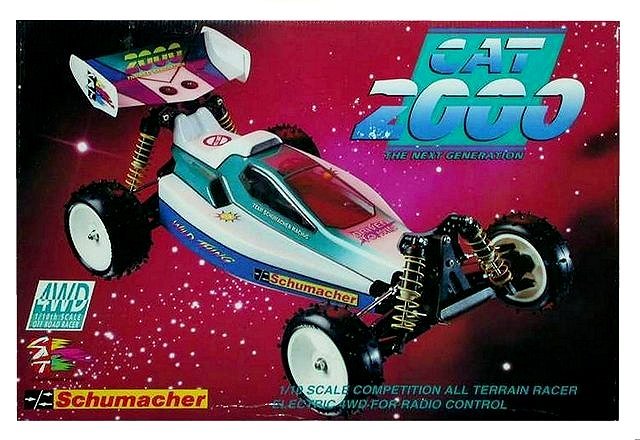
To race the Schumacher Cat 2000, it calls for fine tuning to attain better steering response and improve grip when cornering so you don't slide off the side of the track. Minute changes can make huge advancements. Our easy to understand list will show you how and lead you to the optimum Set-up to put you in front of the rest on the track.
|
|








|
|
|

★ Schumacher Cat 2000 Original Chassis ★
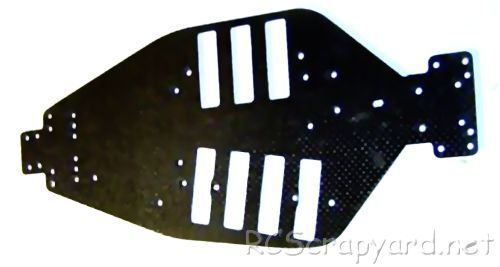
★ Schumacher Cat 2000 Original Chassis ★
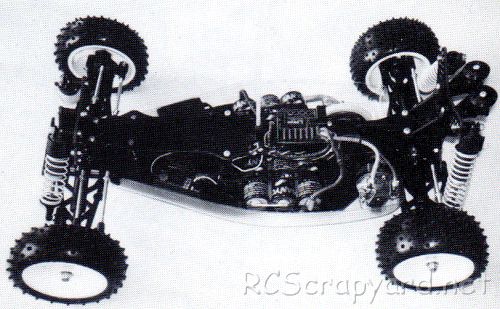
★ Schumacher Cat 2000 Original Chassis ★
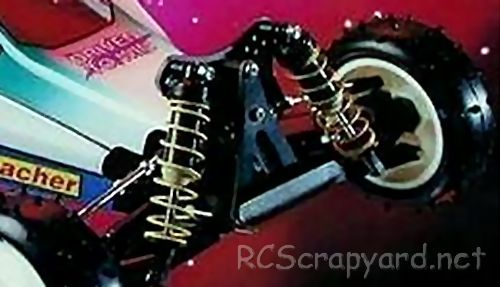
★ Schumacher Cat 2000 Original Chassis ★
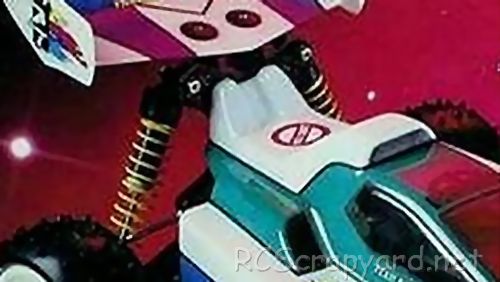
★ Schumacher Cat-2000 EC Carbon Chassis ★
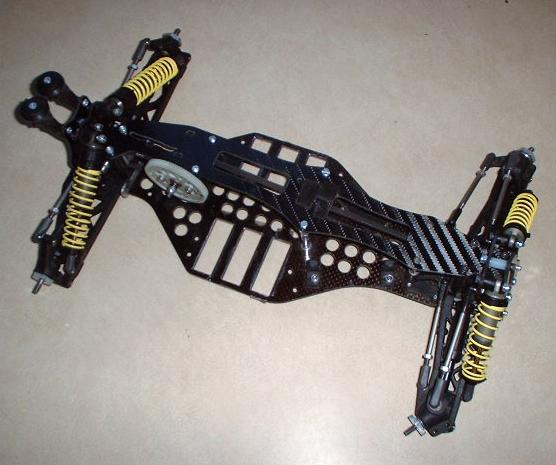
★ Schumacher Cat-2000 ★
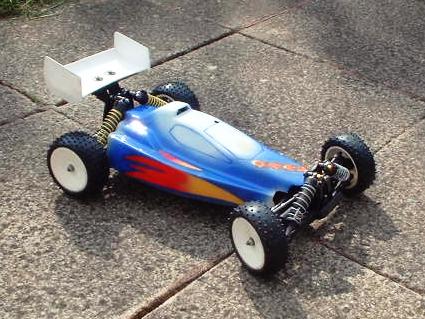
★ Schumacher Cat-2000 EC ★
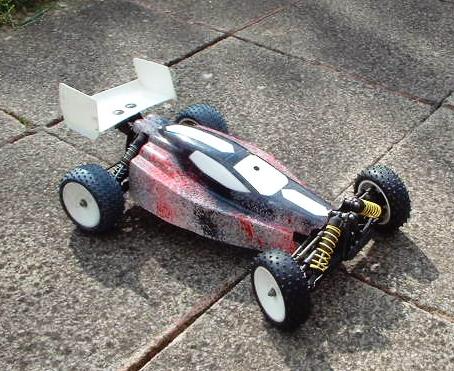
★ Schumacher Cat-2000 EC ★
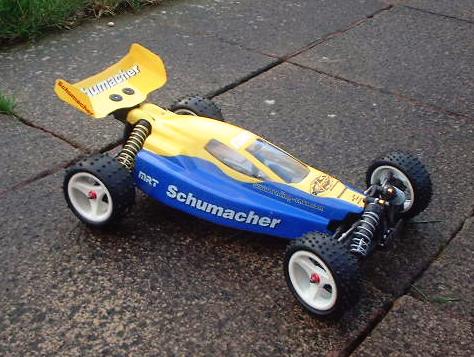
★ Schumacher Cat-2000 EC ★
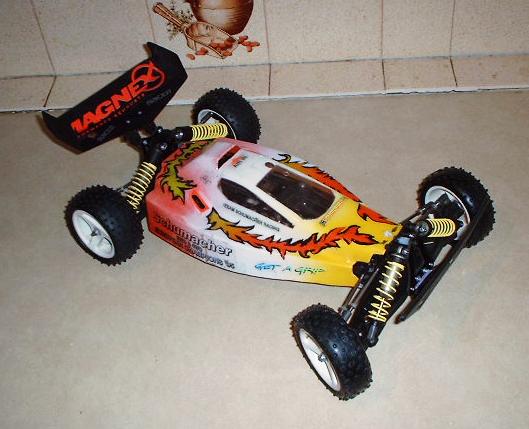
|
Buying a Used Schumacher Cat 2000 Buggy (and What to look for)
Make a General Visual Inspection
Check the Body-Shell
If the body shell of your Schumacher Cat 2000 is broken, ripped or damaged in any way, this can be easily repaired with rubber solution glue. Also, for added protection and if available for your Cat 2000 model, fit an under guard to stop dirt and gravel entering the chassis. Drive Shafts and Turnbuckles
Examine the Drive System
Drive Belts need checking at regular intervals for wear, tension and damage. If deemed necessary, adjust the tensioning pulley until the belt can be depressed in the centre by no more than around 5mm. If the belt was slack, also examine the drive pulleys for wear. The teeth should provide a well seated fit for the belt teeth and not be rounded on the corners. If the belt teeth do not fit snugly, change the pulleys as soon as possible. For top level racing it may be prudent to replace all belts and pulleys after each race meeting. Pinions and Spur Gears
Don't Neglect the Ball-Joints
Ball joints always cause problems. For top level Electric Buggy racing, the plastic ball connectors should be checked and if deemed necessary changed after every meeting. A simple thing like a loose fitting connector popping off could easily end your race, so better safe than sorry. Steering Servo and Servo-Saver
Stabilizers
If body roll on your Schumacher Cat 2000 is a problem, handling can be improved with the use of stabilizers, anti roll or sway bars, stiffer tuning springs and, or, thicker silicone oil in the dampers. Don't Forget those Bearings
▼ Scroll Down for More Articles and Advice ▼
Or, check out our RC Model Car Setup Guide
|
|
Manufacturers and Brands Catalogued, Listed and Reviewed by RC-Scrapyard.
At present, the RC Model Manufacturers, Brands and Distributors covered by us are: ABC Hobby, Academy, Acme Racing, Agama Racing, Amewi, Ansmann Racing, ARRMA, Team Associated, Atomic RC, Axial, AYK, Bolink, BSD Racing, Capricorn, Carisma, Carson, Caster Racing, Cen, Corally, Custom Works, Durango, Duratrax, ECX - Electrix, Exceed RC, FG Modellsport, FS-Racing, FTX, Fujimi, Gmade, GS-Racing, Harm, HBX, Helion, Heng Long, Himoto Racing, Hirobo, Hitari, Hobao, Hong-Nor, Hot Bodies, HPI, HSP, Intech, Integy, Jamara, JQ Products, Kawada, Kyosho, Losi, LRP, Maisto, Mardave, Marui, Maverick, MCD Racing, Megatech, Mugen, New Bright, Nichimo, Nikko, Nkok, Ofna, Pro-Pulse, Protech, PTI, RC4WD, Redcat Racing, RJ-Speed, Robitronic, Schumacher, Seben, Serpent, Smartech, Sportwerks, Step-Up, Tamiya, Team-C Racing, Team Magic, Thunder Tiger, Tomy, Top Racing, Traxxas, Trinity, Tyco, Vaterra RC, Venom, VRX Racing, WLToys, X-Factory, Xmods, Xpress, Xray, XTM, Yankee RC, Yokomo, ZD Racing and Zipzaps. |
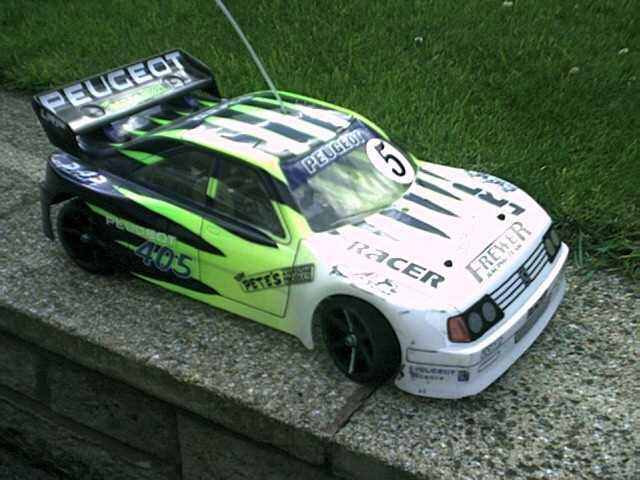
|
Hints, Tips and Information
The Importance of Balancing your Model Car Wheels
The day I passed my driving test at the young age of 17, the first thing I did was to drive over to my girlfriends house and take her out to a long straight stretch of road close by, where the boy racers would often congregate. No one was around that day, so the road was relatively quiet. I slowly went through the gears and we were soon up to 65 with no problems, but as we got closer to 70, my hands began to sense a small vibration on the steering wheel. By the time we hit 75, the steering wheel and the whole car was vibrating wildly. My girlfriend was hysterical, screaming for me to "slow down!" I did of course and tried to calm her down. How I Balanced my Model Car Wheels
Wheel balancing equipment for RC cars is now available on line and from most RC model shops, but back then I had to make my own using the rear end of an old Tamiya F1 car. |
|
Hints, Tips and Information
Anti Squat
Described as the angle at which the suspension arms pivot in relation to the chassis, Anti Squat affects traction under acceleration. |
|
RC Models:
|
Radio & Motors: |
Other
Accessories: |